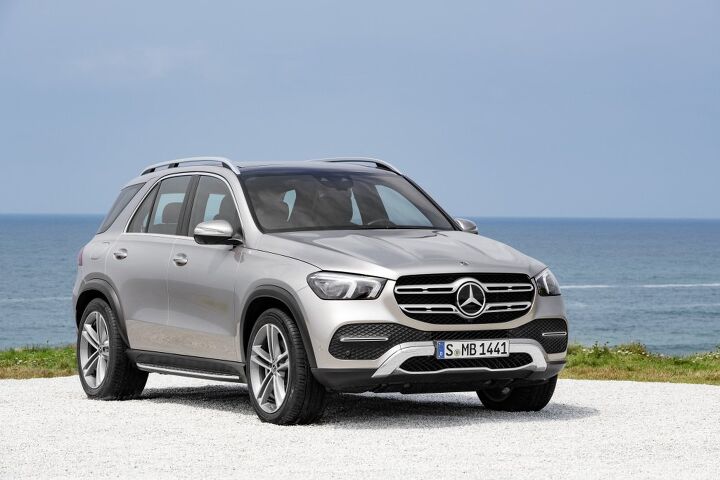Mercedes-Benz GLE Adopts New Platform for 2019, Doesn't Skip Leg Day

The pride of Tuscaloosa is getting a very German revamp for its next generation, adopting evolutionary changes in design while slipping in some new tech that only reveals itself to the driver.
First gracing our shores in 1997, Mercedes-Benz’s GLE debuted as the ML320, finding fans in successful realtors everywhere. Since then, M-B has made sure not to push the the model’s boundaries too much, leaving much of the experimentation to its Mercedes-AMG division. It’s unlikely return buyers will find much to hate about the 2019 version, unless they’re particularly averse to six-pot engines with cylinders arranged all in a row.
Revealed for the first time Tuesday, the new GLE hops to the automaker’s Modular High Architecture platform, promising reductions in weight and an increase in stiffness. Equally as notable, perhaps even more, is the model’s 48-volt electrical system, which technically classifies this vehicle as a mild hybrid. A public debut takes place at October’s Paris auto show.
As reported by Automotive News Europe, the GLE’s wheelbase grows just over 3 inches, improving cabin volume and making an optional third row a possibility. The base engine is a 3.0-liter inline-six generating 367 horsepower, hooked up to the aforementioned mild hybrid system for electrical boost during acceleration (“EQ Boost,” in well-branded Mercedes-Benz parlance). Some 22 extra ponies and an undisclosed amount of torque can be drawn from this system for brief periods.
In the U.S., the current GLE range starts with the GLE400 and its standard twin-turbo 3.0-liter V6. That mill, hooked to a seven-speed automatic, provides 329 hp and 354 lb-ft.
“At a later stage a plug-in hybrid variant with a particularly long range will be added to the drive portfolio,” Mercedes-Benz claims.
While the GLE’s outward looks won’t cause rubbernecking pedestrians to walk into traffic, it isn’t likely to offend the brand faithful. The grille opening grows larger and rounder, with the lower air opening adopting a variation of the dog bone shape seen on other models. A slipperier body means coefficient of drag drops to a low 0.29, further aiding fuel economy gains (whatever those might be).
Beneath the SUV, the automaker’s in-house adaptive suspension system draws power from the 48-volt system to adjust damping rates for each wheel, individually. It should help keep things level when the going gets rough. Mercedes-Benz calls the new setup E-Active Body Control.
Inside, drivers gain larger display screens and a color, high-resolution head-up display. No longer does the center stack host an iPad-like screen poking up above the dash. The automaker’s next-generation MBUX virtual assistant now responds to speech commands, as well as hand and arm gestures. (That latter capability is something we’d like to see in action.)
Further details, as well as pricing, will come closer to the GLE’s early 2019 launch date in the U.S.
[Images: Daimler AG]

More by Steph Willems
Latest Car Reviews
Read moreLatest Product Reviews
Read moreRecent Comments
- Mgh57 Doesn't seem like this tech is ready for prime time.
- Nathan The Ram is the most boring looking of the full size trucks, kind of like a Tundra.If they cancel the Ram Classic, I hope a full resign makes the Ram at least look interesting.
- DJB1 I'll be all for it when it has a proven safety record. I have an awesome life and a lot to live for, so right now I'm not putting that in the hands of overconfident tech-bros.
- Mgh57 I had to read the article because I had had no idea what the headline meant. I've never seen this in the Northeast. Don't understand the point. Doesn't seen efficient aerodynamically
- MaintenanceCosts Depends on the record of the company developing them. If it’s got a record of prioritizing safety over years of development, I’ll be fine with it, and I’ll expect it to be less risky than typical idiot human drivers. If it’s a “move fast and break sh!t” outfit like Tesla or Uber, no way.




































Comments
Join the conversation
Aesthetically (sheetmetal-wise), the GLE was the worst of the MB CUVs. Guess there is some improvement, but that's not saying much. The worst is the greenhouse where it looks like the cargo area/hatch was tacked onto the back of a sedan.
Larger screens inside. Oh ... yay...